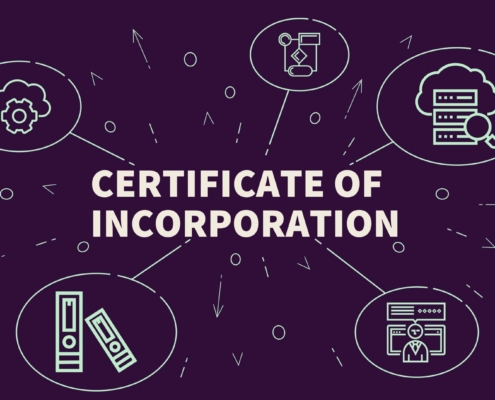What does it mean to pierce the corporate veil in California?
California is a great place for entrepreneurs to set up shop, whether it’s an LLC or a corporation. Limited liability protection is a major perk of establishing a limited liability company or a corporation. Members of an LLC and stockholders of a corporation are two examples of separate legal entities that shield their owners from individual responsibility for business obligations and responsibilities. Rather, owners can only lose as much as they put into the business. Particularly in sectors where disputes involving the law are common, this protection can offer a great deal of peace of mind to company owners.
Limited liability protection is not, however, conferred upon one by mere formation of an LLC or corporation. To maintain limited liability, a business owner must run their limited liability company (LLC) or corporation (corp) in a way that prevents third parties from penetrating the protective corporate veil. What follows is an in-depth examination of the idea of “piercing the corporate veil,” including its history, potential applications, and the consequences it might have for different stakeholders.
How Do Corporate Veils Work?
A legal concept known as the “corporate veil” shields owners from individual responsibility for a business’s debts and responsibilities by creating a barrier between the owners’ identities and the corporation’s. The corporate veil prevents creditors, courts, and other third parties from seizing the private wealth of a business’s owners, managers, and employees.
But there are ways to see through or even lift the corporate veil. What does this mean in a practical sense? In such a case, the corporate veil may be disregarded and the owners’ personal wealth and responsibilities may be collected from by the court.
How does one break through the Corporate Veil?
The legal process of “piercing the corporate veil” in California allows plaintiffs to hold the owners or shareholders (or members in the case of an LLC) personally responsible for the debts and liabilities of a business. In considering whether or not to pierce the corporate veil, courts exercise caution because they typically wish to maintain the predictability that comes with an entity’s corporate form.
The principle of Alter Ego liability is the main tool for breaching the corporate veil. In order for a court to pierce the corporate veil under the idea of Alter Ego liability, the following two-part test must be satisfied:
Because of their shared nature, the interests of the company and its shareholders are inseparable.
To prevent an unfair outcome, any action taken by the corporation should be considered an action taken by the shareholders as well.
As an example, plaintiffs can prove that treating the company and its stockholders as two distinct entities will lead to an unfair outcome by presenting proof of either:
Discrimination resulting from dividing the company and its stockholders.
Unfairness caused by wrongdoing or poor faith behavior that makes shareholders’ use of the corporate structure unfair.
It is not necessary for plaintiffs to prove that shareholders of a corporation acted dishonestly or with malicious intent to evade an obligation under the Alter Ego theory. To dissolve a corporation in California, one need simply prove that continuing to recognize it as an independent legal entity will result in an unfair or unjust outcome.
Although there is no one-size-fits-all combination of facts that would allow a court to pierce the corporate veil, they will consider the following:
- The company is controlled by a single individual who owns every share.
- A shareholder with control over the corporation.
- A shareholder who uses the same business or office space as the company.
- A shareholder who mixes their personal wealth, bank accounts, and documents (such as minutes) with the company’s.
- A business or shareholder advertising to the general public the following: that the shareholder is personally responsible for the company’s obligations, that the shareholder can use company money to cover their own debts, or that the shareholder can treat company assets as their own.
- A company that doesn’t preserve proper documents, like minutes, elections for directors, and appointments of officers.
- An organization that does not adhere to the rules of corporate governance.
- If a company and its shareholder have the same board of directors, executives, legal representation (both for the company and the shareholder), or payroll, then the two entities are said to be one and the same.
- A company that is undercapitalized or does not have enough assets.
- A shareholder who treats the corporation as an instrument to further his or her own interests.
- Someone who owns stock in the company but also provides substantial services or goods to it.
- The failure of a shareholder to do any of the following throughout the incorporation process: provide capital, issue shares, apply for required permits, or finish forming the organization.
Joint Enterprise Alter Ego Liability
When a third party owns both of a brother-sister corporation’s shares, the possibility of alter ego liability exists. One name for this is the “joint enterprise” or “single enterprise” theory. If the court rules that the two companies and their owner are really one business, then the whole business is responsible for everything that any one of its parts does or doesn’t do.
To see through a sister company’s corporate veil in a California court, the following must be true:
- The degree to which all the entities share interests and ownership makes the distinct corporate identities meld into one enterprise.
- If these actions were considered solely to be the responsibility of one of the component entities, an unfair outcome would ensue.
Similar to the scenarios listed above, the things that make it possible to find a single company include:
- Financial and asset commingling between the many entities, as when one entity uses its own money or assets to pay for or guarantee the debts of another.
- Owning the same amount of stock.
- Having the same company leaders and owners.
- Relying on the same staff and locations.
- Putting aside the formality of the corporations involved.
- Having one part act as a vehicle for the activities of another.






























